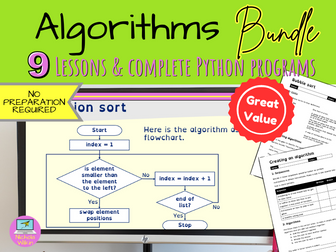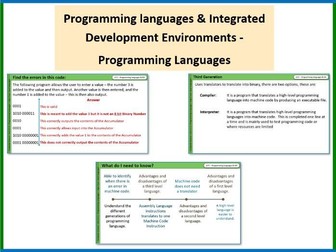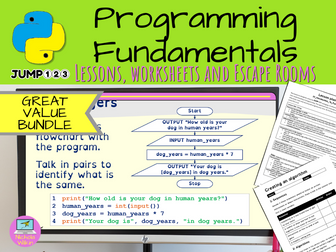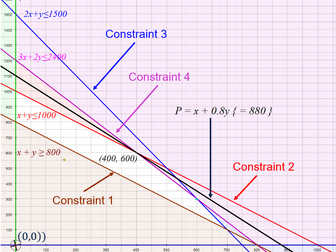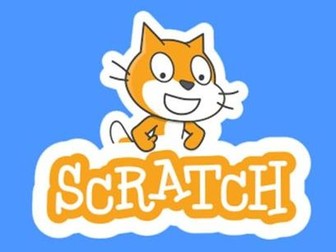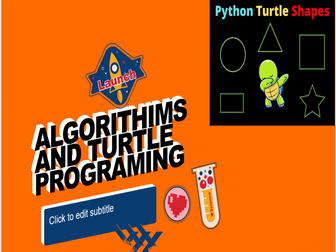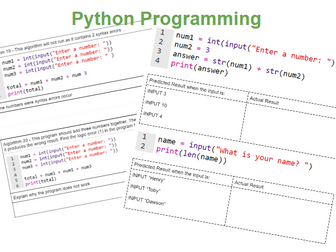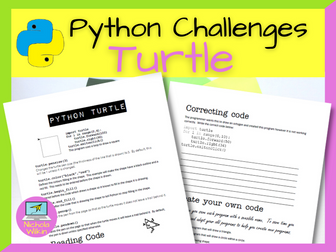Bundle
Algorithms Bundle
A great introduction to understanding computational thinking, algorithms and sorting and searching algorithms. Pupils learn about, decomposition, pattern recognition, writing algorithms, flowcharts, bubble sort, insertion sort, merge sort, linear search and binary search algorithms. These ready to use lessons will save you hours of preparation and can easily be adapted to meet your own requirements.
WHAT IS INCLUDED?
In this unit you have 9 ready-to-use lessons:
3 lessons on computational thinking (decomposition, pattern recognition and abstraction)
3 lessons on understanding algorithms (creating an algorithm, flowcharts, selection and iteration)
3 lessons on sorting and searching algorithms (bubble sort, insertion sort, merge sort, linear search and binary search)
.
These lessons include everything you need such as:
a very high-quality accessible PowerPoint presentation for every lesson that effortlessly leads the teacher through the lesson and includes all the answers to the many questions and tasks the students need to complete
an editable worksheet for every lesson
an easy-to-follow editable lesson plan for every lesson
.
Not only have you got the complete lessons above but if you wanted to extend the searching and sorting algorithms unit I have made it extra easy by also including the Python programs (both with and without comments) for each of the searching and sorting algorithms along with the pseudocode covering the AQA, OCR and Edexcel syntax.
PRIOR LEARNING
Pupils do not need any prior learning for the first of these units “Computational thinking”. After the computational thinking unit pupils can progress immediately to “Understanding Algorithms” unit or you may want to split it up and use these units in separate year groups. Older pupils who are more familiar with Python will enjoy the “Sorting and Searching Algorithms” unit.
EASY TO USE
These ready to use resources are so straightforward that although I have included a lesson plan, most teachers can teach straight from the PowerPoint presentation without any further assistance. And best of all, the answers are included saving you time and energy.
This makes these lessons suitable for experienced computing specialist teachers along with non-specialists and early career teachers.
EDITABLE RESOURCES
I understand that teachers want to adapt their resources, so I’ve made the bold decision to make these resources editable.
Therefore, if you need to use a particular template style for your school or pupils with special educational needs, you can change the PowerPoint presentation, worksheet and lesson plan to suit your needs.
These lessons are highly interactive and engage students straight from the start.
Start reaping the benefits today of incredibly high-quality, professionally designed teaching resources that you can use with virtually no preparation.
Just click on the BUY NOW button to download them straight away. You’ll wonder how you ever managed without them.
